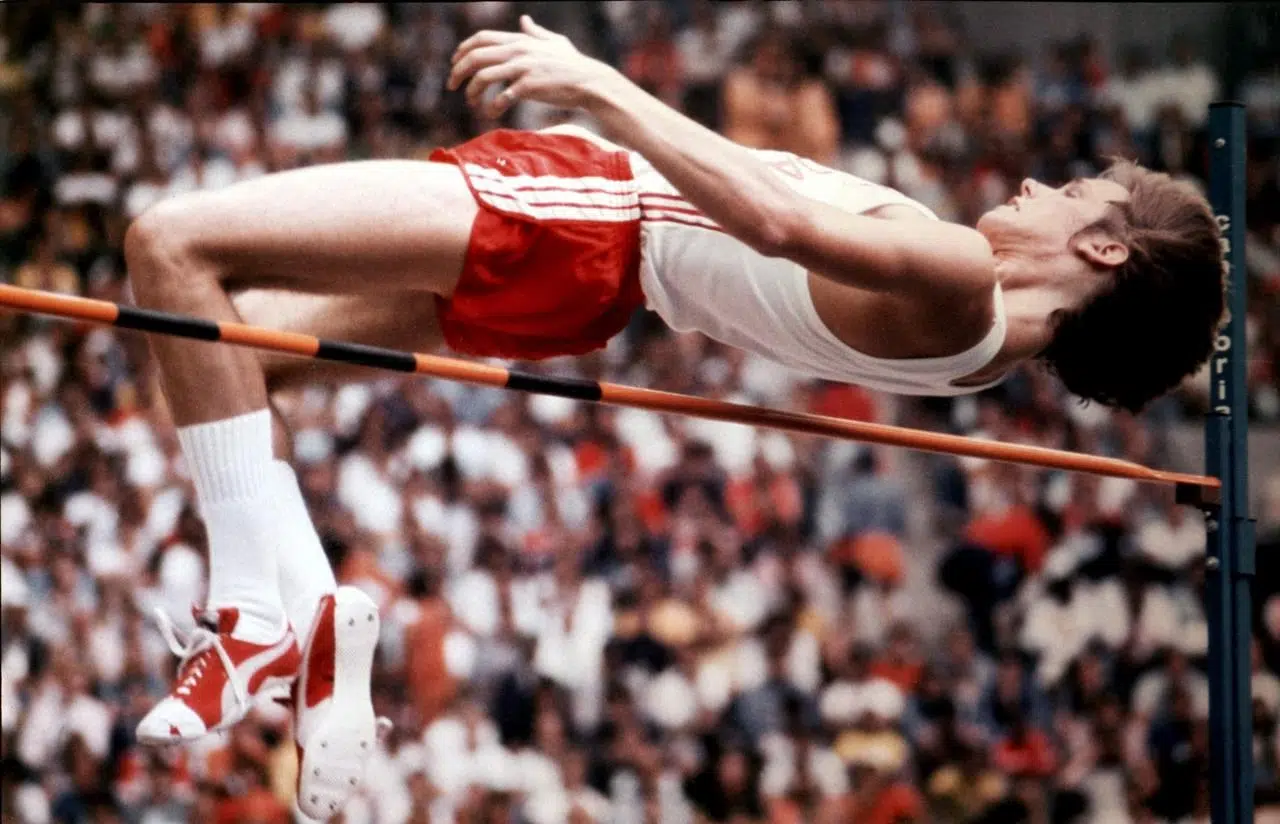
Controversy aside, 1976 Olympics were a huge success on the playing fields
MONTREAL — Greg Joy calls carrying the Canadian flag at the closing ceremony of the 1976 Montreal Olympics “one of the highlights of my life.”
The final showcase before 73,000 at the unfinished Olympic Stadium ended a Summer Games that was a huge success on the playing fields despite cost overruns, labour troubles and charges of corruption that plagued the lead-up to the event, which celebrates its 40th anniversary on July 17.
“It was a fantastic Games in that it was well-organized despite the construction issues,” said Joy. “It was a friendly Games.”
The first Summer Games ever held in Canada made international stars of Romanian gymnast Nadia Comaneci, American boxer Sugar Ray Leonard, decathlete Bruce (now Caitlyn) Jenner and others, but the one thing it lacked was a gold medal for the host country.
Canada ended the Games with five silver and six bronze medals — all but three of them from the swim team. It is still the only host country to not win gold at a Summer Games.
Perhaps the best shot came from Joy, one of the elite high jumpers of his era who cleared 2.23 metres to beat Dwight Stones’s world record but had to settle for silver when he couldn’t quite match the 2.25 put up by Jacek Wszola of Poland.
Joy was upset at losing, even as the country cheered his performance, and made him the hero and named him the flag-bearer.
“Canada’s sports expectations have changed a lot in 40 years,” he said. “Honestly, we were hoping to win a medal, but it wasn’t an expectation. Now it is. Now it’s ‘How many are we going to win?’ We have a great system now.
“I was competing with the best in the world and I knew I was up there. I was focused on the gold medal. Falling short by two centimetres wasn’t a thrill.”
Joy’s is perhaps the best-remembered Canadian performance, but one who perhaps should have won gold was Edmonton swimmer Cheryl Gibson, who came second in the women’s individual medley to East Germany’s Ulrike Tauber. Becky Smith of Vancouver was third.
The East Germans, who finished second in the medal standings with 40 gold and 90 overall behind the Soviet Union (49 gold, 125 overall) and just ahead of the U.S. (34 gold, 94 overall), were later revealed to have run an extensive doping program. Gibson may have been elevated to gold if Tauber had ever been disqualified, but for lack of proof the East German performances still stand.
There were also silver medals for paddler John Wood of Oakville, Ont., equestrian Michel Vaillancourt of St. Felix de Valois, Que., and the men’s sprint relay swim team.
Halifax backstroker Nancy Garapick won pair of bronze medals in the pool, while singles went to Shannon Smith of Vancouver and two women’s relay foursomes.
Canada finished 27th in the medals table, but viewers got plenty of entertainment from the visitors.
First among them was Comaneci, the 14-year-old gymnast who posted the sport’s first perfect 10 score on the uneven bars on the first day of competition. She went on to put up seven perfect 10s en route to three gold medals. That, plus her infectious energy and smile, made her the undisputed star of the Games.
There were 6,084 athletes in Montreal — including 1,260 women — and much of the action took place on the track, where Jenner, Cuban middle distance runner Alberto Juantorena, American hurdler Edwin Moses and Finnish endurance runner Lasse Viren became household names.
There would have been more competitors, but 1976 was the first Games hit with a major boycott as most African countries stayed home rather than compete with New Zealand, whose cricket team had defied an international movement by touring Apartheid South Africa. The next two Olympics — 1980 in Moscow and 1984 in Los Angeles — were also boycotted for other reasons.
Bill Beacon, The Canadian Press
©2016 The Canadian Press


